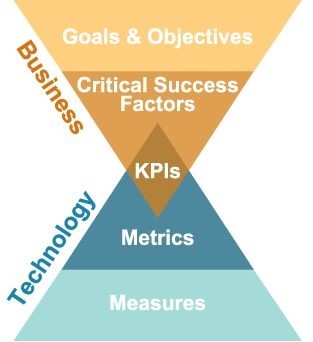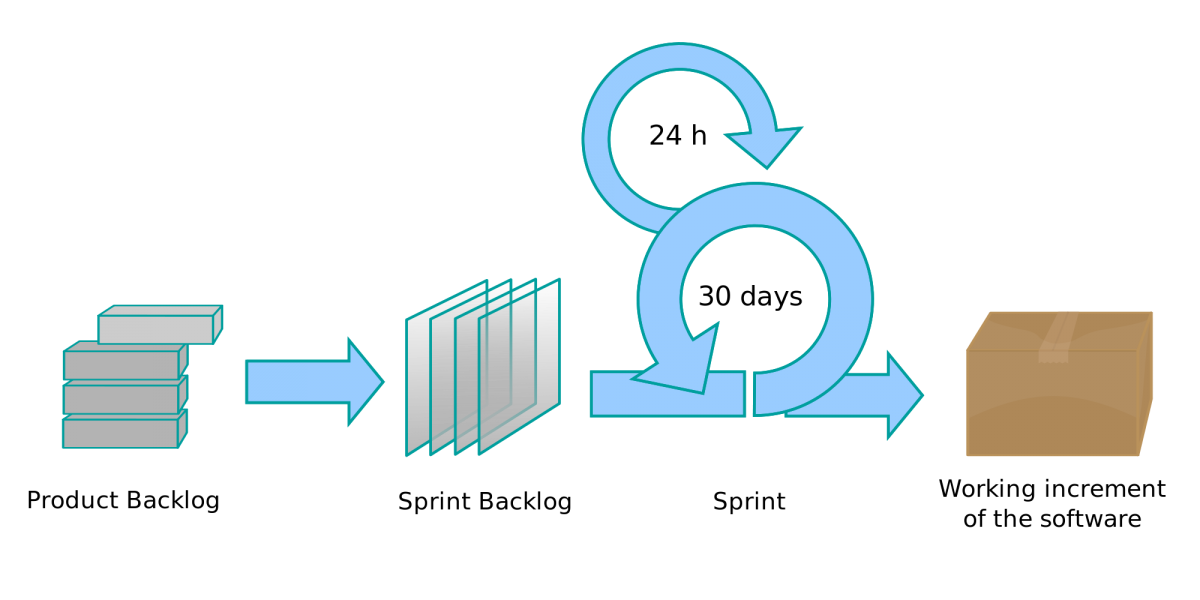In contrast to more traditional waterfall methods, agile processes appear to be free form in managing software development. Derived from the agile manifesto, which highlights individuals and interactions over processes, agile projects trend toward collaborative incremental development, unlike waterfall upfront planning and standardize development stages. Agile has high adaptability through emphasis on individuals, interactions, software over documentation, customer-facing collaboration, and response to change over following upfront plans. To traditional project planners, agile may sometimes appear loose in structure.
But with agile, flexibility in structure does now mean lack of consolidated development. In respect to software development, Key Performance Indicators, or KPIs, integrally guide each iteration of the agile process. KPIs are process directional instruments which evaluate the planning, strategic, operational, and customer engagement achievements of agile projects and project relations to organizational prerogatives and strategic goals. Formulating KPIs which effectively measure progress and performance requires a proficient understanding of what is important to the organization.

Image Source: unilytics
What is considered ‘important’ has traditionally been a function of departmental priorities. But with teams being a concerted composite of multiple professional disciplines, KPIs defined within agile projects comprehensively trend towards organizational interests. There is an encompassing imperative to formulate KPIs which analyze and assess the present state of production, the key activities which contribute to advancing production, potentials for improvement, and adherence to the management framework. The KPI scorecard must be balanced.
The accelerated timeframes of agile sprints dictate that KPIs guide processes towards remaining on course within project goals and objectives. KPIs guide agile teams in essential software features and primary functionalities. Sprint planning meetings must include key indicators of performance goals and achievements which tie into business needs. KPIs standardize code development and simultaneous automated testing to ensure that shippable releases remain in compliance with planned objectives. To better adhere to KPIs, cross-functional agile teams, in which developers, QA, and IT contribute to all three disciplines, provide expertise that best ensures quality functionality from each perspective.
KPIs can be directional -- pointing to progress in production, or quantifiable for a more in depth analysis of processes. Directional KPIs point to the flow of activities towards performance goals and objectives. Quantifiable KPIs reduce the flow to specifics, such as rendering a customer rating of Excellent, Good, Fair, or Poor into numerical values or assessing the extent to which project performance actually meets performance goals.
Sprints can use quantifiable indicators to analyze directional performance relative to planning, design, development, and integrated testing. Targeted areas of achievement can be discussed and assessed as to actual accomplishment. Discussions can drill down into the effectiveness of various functions and processes in meeting the KPI strategic initiatives laid down by business management.
KPIs are a prime consideration in software planning and design sprints in respect to how well the release will offer quality metrics and efficiencies, attract new revenue, engage new customers, satisfy customer needs and desires, and retain customer interest. Managers and stakeholders monitor sprints for achievements that adhere to Key Performance Indicators.
Leading and Lagging Indicators
The design and knowledge domain of effectively created KPIs targets meaningful achievement of key goals. Leading indicators guide anticipated performance towards strategic goals. Desired outcomes in customer satisfaction, innovation, market share, and extended consumer engagement are the goals to which leading indicators point.
Some assessments are lagging indicators which speak to the results of past performance. Positive and negative lagging indicators can illustrate whether performance improved or declined in respect to KPIs and the likelihood for conditions to further improve or decline. Lagging indicators therefore contribute to strengthening leading indicators for improved future results.
The strategy towards evaluating KPIs is to balance both leading and lagging indicators. You want to both project productive strategies and analyze outcomes. The in depth metrics of business and developmental performance in respect to both goals and results make identifying leading indicators a difficult process. Revisiting and refining KPIs consistently involves managers and contributors to the release process.
KPIs in Agile Decision Making
In addition to being analytical performance metrics, KPIs are decision making tools. Managers and stakeholders, as well as agile teams, need the dimensional measures of performance contributed by KPIs to make informed strategic and process decisions. Using Key Performance Indicators, management and development teams can primarily focus on the crucial functions which reflect strategic goals. Effective KPIs therefore must be preceded by strongly expressed fundamentals and enterprise strategies.
KPIs in Agile Phases
Sprints are fundamental to agile iterations. KPIs therefore become fundamental to sprints. The design phase of sprints is initial to the development process and, while tweaked as needed to remain focused on objectives, is to remain in place unless proved to be unreliable in achieving objectives. Initial design essentials consequently rely heavily on KPIs to define patterns, formats, and program requirements in respect to the direction each sprint will take. The basics of sprint design are standard across agile methodologies
Estimating sprint velocity, the next phase of the agile development process, uses KPIs in determining the capacity for achievement within the sprint 1 to 2-week timeline.
Team members are then each assigned a sprint, per member expertise and positioning within the project.
Different KPIs for Different Sprints
Several process methodologies compose the overall Agile principle. Each of them have similarities, but their differences rely on different KPIs. From XP to scrum testing, ASD to Crystal, and DSDM to FDD, distinct KPIs guide the development process.
While the broad agile principle reduces documentation in favor of essential development, to meet differing KPI criteria, the extent of documentation differs among agile methodologies. Scrum, ASD – Agile software development, Crystal, and XP - Xtreme Programming normally decrease documentation. While DSDM – Dynamic Systems Development requires further documentation, FDD – Feature-Driven Development emphasizes documentation of development processes. Differences in documentation requirements are based in the different Key Performance Indicators which guide distinct processes.
Scrum
The key rationale of Scrum is that customers can change their minds during the development process. Scrum therefore codes in iterative increments to accommodate fluctuating probabilities. Product owners develop the priorities to which teams adhere and thereby often represent end users.
The KPIs which consequentially guide Scrum emphasize flexibility in process with adherence to strategic outcomes. While flexibility in means is encouraged in Scrum, KPIs strictly measure adherence to enterprise strategic goals.

Image Source: Lakeworks
ASD – Agile Software Development
Agile software development integrates a set of principles in which collaboration is the decision maker for requirements and solutions. Cross-functional Agile teams self-organize to apply adaptive planning and evolve development for quick delivery and continuous improvements in software deployments. Rapid response to change is an overriding ASD precept. End user participation is also encouraged.
Key KPIs for ASD stress decision making that arises out of collaboration, and strategic objectives that employ cross-functionality, to ensure software quality and agility. Key performance indicators in addition guide teams towards efficiencies which accommodate rapid pivots and quickly executed competence towards devising innovative initiatives.
XP – Xtreme Programming
The focus of Xtreme Programming, or XP, is on improving software quality, as well as sensibility to changing customer requirements. XP encourages frequent releases and short release cycles which target improved productivity. Xtreme Programming introduces checkpoints, or phases in which changing customer requirements can be adopted. To discourage programming of features before they are needed, coding is done in pairs with extensive code review and integrated unit testing. Acceptance testing and end user involvement are in addition key precepts of Xtreme Programming.
XP KPIs emphasize unit testing and strict coding enforcement. Setting up checkpoints which facilitate both coding and customer engagement is also key. Discipline with little room for collaboration is in addition a prime indicator to efficient performance. Accentuating end user feedback in coordination with strategic goals is another KPI measure.
Crystal
Crystal is actually a group of methodologies ascribed to agile in which distinct views on processes apply diverse tools, techniques, standards and roles to development. Crystal methods focus on people, interaction, community, skills, talents, and communication. The indistinct definitions of Crystal methodologies allow teams to conduct similar activities using different approaches. The talent of team members is normally stressed over processes of development. End user participation is encouraged within processes.
KPIs within Crystal methodologies consequentially focus on outcomes rather than means. Quality outcomes which generate customer satisfaction within a timeline that retains customer engagement are key to quality performance within Crystal patterns of development.
DSDM – Dynamic Systems Development
The DSDM methodology originated to provide rapid application development, or RAD, and has progressed into a project management discipline and a solution delivery process. DSDM assumes the values of agile development with an emphasis on continuous customer involvement. End user participation is encouraged.
Project management strategies are the focus of DSDM KPIs, along with keen insight in determining solutions. KPIs in addition stress steady customer input and coordinated customer feedback.
FDD – Feature-Driven Development
While iterative and incremental, FDD cohesively combines several traditionally recognized best practices. Best practices within FDD drive functionality towards regular and quick delivery of client-valued software with end users participating through reports. Modelled after industry best practices, FDD develops software in short iterations which consist of five basic activities. FDD activities include:
- developing an overall model
- building a feature list
- planning by feature
- designing by feature
- building by feature
FDD KPIs emphasize adopting industry best practices, accentuate the importance of overall models adhering to predefined strategic goals, and the integration of feature development to produce coordinated software functionalities.
KPIs are vital to business’ strategic goals, and through this association assist managers in evaluating the preferred course of enterprise initiatives, as well as whether the direction of production is on course. Software development teams integrate enterprise initiatives into development objectives with the goal of software deployments that meet strategic enterprise goals. Enterprise test management is essential to supporting the software development process and overall corporate goals. Corporate revenue targets are deeply embedded in the functionality, customer satisfaction, and retention of customer engagement in respect to software releases. Consequentially KPIs are deeply embedded in software development projects.
Monitored over time and adjusted per shifts in strategic initiatives, well-engineered KPIs best assure efficiency of processes through quality performance metrics.
Related Articles: